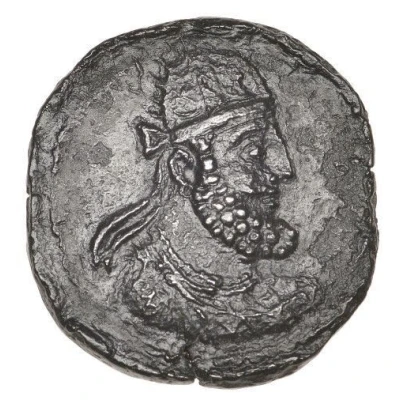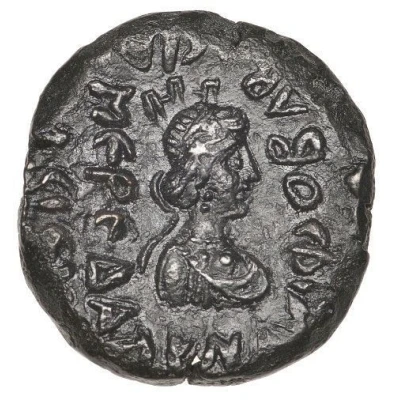


© Dix Noonan Webb
Tetradrachm - Meredates and Uiphoba
142 year| Bronze | 13.99 g | 28 mm |
| Issuer | Omani people (Mesopotamia) |
|---|---|
| Type | Standard circulation coin |
| Year | 142 |
| Value | Tetradrachm (4) |
| Currency | Drachm |
| Composition | Bronze |
| Weight | 13.99 g |
| Diameter | 28 mm |
| Shape | Round (irregular) |
| Technique | Hammered |
| Demonetized | Yes |
| Updated | 2024-10-10 |
| Numista | N#216544 |
|---|---|
| Rarity index | 95% |
Reverse
Turreted and draped bust of Tyche right; date below.
Script: Greek
Lettering:
ΜΕΡΕΔΛΤ
ΒΛCΙΛΕΥC
ΥΝΔ
VΙΦΟΒΑ ΒΛCΙΑ
ΟΜΑΝ
Translation: The king Meredates and the queen Uiphoba of the Omani
Comment
Illustration of the coin with complete lettering:© M. A. de Longpérier - "Meredates, King of the Omani", The Numismatic Chronicle, 1863
Other references:
- Daniel T. Potts, "Araby the Blest: Studies in Arabian Archaeology", page 146;
- Monika Schuol, "Die Charakene: ein mesopotamisches Königreich in hellenistisch-parthischer Zeit", page 232;
- George Francis Hill, "Catalog of the Greek Coins of Arabia Mesopotamia and Persia", page ccxiii;
- William H. Scott, "Note on the Coins of Meredates and Uiphoba", The Numismatic Chronicle vol. 19, page 226.
Interesting fact
One interesting fact about the Tetradrachm coin from Omani people (Mesopotamia) is that it features a unique blend of ancient Greek and Mesopotamian design elements. The obverse side of the coin depicts the heads of two rulers, Meredates and Uiphoba, in a style reminiscent of ancient Greek coinage, while the reverse side features a stylized representation of a mythical creature, possibly a Griffin, which is a common motif in Mesopotamian art. This fusion of different artistic traditions reflects the cultural exchange and influence that occurred between ancient civilizations in the region.